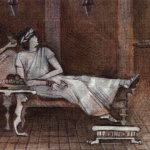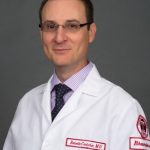The authors included a long history attributing medicinal properties to pomegranate and noted its documented antioxidant effect. They examined the effects of pomegranate extract on pathways of cartilage catabolism and studied it in an animal model of osteoarthritis. They found that pomegranate extract affected intracellular signaling pathways that link receptor signals and nuclear gene transcription. Mitogen-activated protein kinases (MAPKs) and transcription factors (RUNX-2) regulate several processes (apoptosis, nitric oxide synthase) and mediators (cytokines, monocytes/macrophages, neutrophils, T cells, matrix metalloproteinases) important in inflammation and cartilage damage. In animal models of arthritis, inhibition of the protein kinases was therapeutic. Thus, these pathways are of considerable interest as potential targets for intervention in human disease.
Should we be surprised that a food product has these biological effects?10 From whence came aspirin? Colchicine? (Willow bark and meadow saffron, respectively, if you’ve forgotten.) Other potent agents in our armamentarium? It was probably more serendipity than science that brought gold, antimalarials, and sulfasazine into our practice. There are other food products with potentially relevant biological effects (some of which I’ve discussed in previous columns)—resveratrol, chocolate, teas, curcumin, perhaps ginger, and others. And let’s not forget the occasional patient with food sensitivity.11
We care not the source of an idea, only its experimental validity. There are not “complementary” and “alternative” medicines, only evidence-based medicine. We have seen and will see more therapies derived from food or food products. And it should not surprise us.
Dr. Panush is professor of medicine, Division of Rheumatology, at the Keck School of Medicine, University of Southern California, in Los Angeles.
References
- Healy B; The Yentl syndrome. New Engl J Med. 1991;325:274-276.
- Zakaib GD. Science gender gap probed. Nature. 2011; 470:153.
- Ceci SJ, Williams WM.Understanding current causes of women’s underrepresentation in science. Proc Natl Acad Sci U S A. 2011;108:3157-3162.
- Lo Sasso AT, Richards MR, Chou C-F, et al. The $16,819 pay gap for newly trained physicians: The unexplained trend of men earning more than women. Health Aff (Millwood). 2011;30:193-201.
- Zernike K. Gains and drawbacks for female professors. At MIT, a sense of unfair advantage. New York Times, March 21, 2011, A15.
- Rahbar L, Moxley G, Carleton D, et al. Correlation of rheumatology subspecialty choice and identifiable strong motivations, including intellectual interest. Arthritis Care Res. 2010;62:1796-1804.
- Hart D. Viewpoint: Why take up rheumatology? Ann Rheum Dis. 1980;39: 97-98.
- Rasheed Z, Akhtar N, Haqqi TM. Pomegranate extract inhibits the interleukin-1beta-induced activation of MKK-3, p39alpha-MAPK and transcription factor RUNX-2 in human osteoarthritis chonrocytes. Arthritis Res Ther. 2010;12:R195.
- Khalife S, Zafarullah M. Molecular targets of natural health products in arthritis. Arthritis Res Ther. 2011;13:102.
- Panush RS. Shift happens. Complementary and alternative medicine for rheumatologists. J Rheumatol. 2002;29:656-658.
- Panush RS, Stroud RM, Webster EM. Food-induced (allergic) arthritis. Inflammatory arthritis exacerbated by milk. Arthritis Rheum. 1986;29:220-226.


